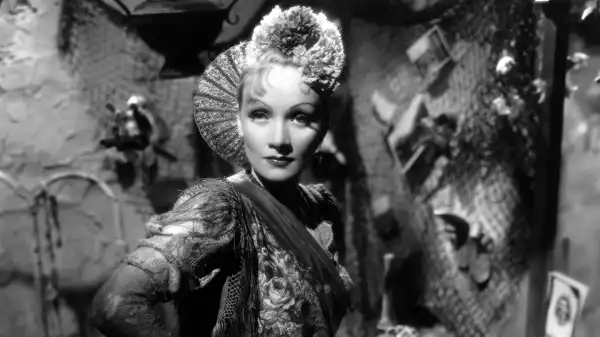
Save this storySave this storySave this storySave this story
Sometimes there is a light at the end of the rabbit hole. When I recently saw Josef von Sternberg’s 1935 film The Devil Is a Woman, I was curious about its first showing and came across a very insightful review in the Times by one Andre Sennwald, about whom I had previously heard nothing. It didn’t take long to discover that he had been appointed film critic in October 1934, at the age of twenty-seven, and that he had died in January 1936, at the age of twenty-eight, of gas poisoning from a stove in what the coroner ruled was probably suicide. He had written a lot in that short time. He typically published four reviews a week, plus a longer Sunday essay on the movies. (Sennwald’s archive on the Times website, dating back to his first review on September 18, 1934, totals more than three hundred pieces.) But it is not the sheer number of his works that makes him worth revisiting. Rather, he is considered one of the most insightful and prescient early American film critics. By fitting new releases into the commercial mainstream of his time, he offers a passionate perspective—grounded in discerning taste—that transcends boundaries, demonstrating a conscious commitment to the future of the medium.
Because Sennwald's work was published almost daily, reading his reviews provides a cross-section of the films of the time—or at least the ones premiering in New York. Sennwald's interests were varied: he reviewed big-budget blockbusters as well as serious dramas, comedies and melodramas, documentaries and musicals, horror films, and even some rare independent films. He reviewed many British films, as well as films from France, the Soviet Union (including an animated version of Gulliver's Travels), and even Nazi Germany. (He was acutely aware of the propaganda distortions that were tainting the art form, including those that were inherent in Hollywood films; some of which were inseparable from it; and others that took their place.) In this process, Sennwald reflected both the passion and the burden of this heavy diet of new releases: his excitement for great films is palpable, but too much of his effort is spent on plot descriptions and finding witty ways to say “so-so.” In this regard, Sennwald was confronting a problem that still exists in the field: When attention is focused on new releases, small differences in merit become more significant, and praise begins to extend to anything that isn’t entirely disappointing. He was aware of this, writing after a year of work: “We film critics, when such dull and boring films as 'Your Uncle Dudley' appear, turn anemia into a small virtue by applying to them such kindly adjectives as amiable.” Along with his prescient artistic judgments, he provided the consumer with a guide that was always at hand, often evaluating and praising films as “entertainment.”
His immersion in what was happening in the world of film made him an important witness. It was a world that was changing rapidly, and by pure chance, Sennwald landed the job at a crucial moment in the history of cinema. Talking pictures were still relatively new (the first all-talking film, Lights of New York, came out in 1928), and Sennwald had witnessed a similar technical leap—the first color film, Becky Sharp, came out in June 1935, and he described it as “dramatically exhausting” and “incredibly exciting.”
The major change he observed in the movie business was an even more significant transformation of the art form: the strict enforcement of the Hays Code, which began in mid-1934. In early 1935, a few months after the crackdown began, Sennwald summarized what had happened. In May 1934, a Catholic priest in St. Louis “sent posters to several thousand Catholic parishes, high schools, and colleges in which he listed five current films as ‘unfit for viewing and a menace to decency.’” Hollywood ignored them, but “the campaign gained astonishing speed and was so effectively publicized that it swept the country and shook Film City to its foundations.” The results, Sennwald notes, were immediate: Fearing federal censorship, studios “hastily revised their production schedules,” cut back on films already made, and “even allowed the Hays office to appoint Joseph Breen as the industry's internal censor, giving him ultimate authority to reject, rewrite, and distort screenplays before they hit the screen.”
In October 1934, Sennwald interviewed the famous sex comedy director Ernst Lubitsch about the impact of the Code: “We will be paralyzed in our artistic efforts to present a frank and accurate view of life.” Lubitsch was right. In early 1935, Sennwald noted that although m
Sourse: newyorker.com






